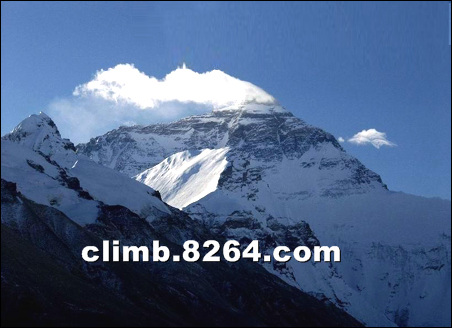If you have the opportunity to come to the foot of Mount Everest, you can look at the beauty of this goddess. The peaks of the mountains are hidden in the clouds, and the glitzy world of ice and snow can be seen. Also, what is of great interest to you is the clouds that float on top of the peaks. This cloud seems to be a flag flying behind the goddess. This kind of cloud is therefore vividly called a flag cloud or flag cloud. The shape of the Everest Qiyun cloudless; sometimes like waves crashing; it suddenly turned into a rising smoke; horses just like galloping horses, and then gently veiled like a veil, often changing the appearance of the goddess. Before understanding the cause of the Cowin, let us first see how Cowin is formed! During the ascent of humid air, the volume of air mass will slowly expand due to the gradual decrease of air pressure around. When the air mass expands, it consumes its heat energy, causing the air mass to continuously decrease in temperature. The drop in temperature will inevitably cause part of the moisture in the moist air to adhere to the soot particles suspended in the air and condense into small droplets. When the temperature is lower than 0°C, small ice crystals or droplets can be formed collectively as cloud droplets. This small, dense cloud of droplets often forms fog near the ground; if it is suspended at high altitude, it is the cloud. Qiyun is rarely seen at other peaks, or even seen at all. In other words, Qiyun can be considered a "special product" of Mount Everest. Why is this? Maybe it's because it's very high, but there are several more than eight kilometers of peaks around Mount Everest, all of which are very high. These peaks do not have such a significant qiyun on Everest. It can be seen that in addition to the height of the mountains, there must be other specific geographical and environmental conditions for the formation of the Qiyun. On the majestic Mount Everest, generally speaking, snow-covered areas are 5-7 kilometers above sea level. In areas over 7 kilometers in length, due to the high winds, the slopes are steep and snowfall is not easy to accumulate. Therefore, most of them are bare gravel surfaces. Whenever the sun shines directly after sunrise, the nature of the ground surface is uneven and the state of heat is different. Ice and snow reflect more heat, and the temperature is lower than that of the free atmosphere. The gravel surface absorbs heat quickly and the temperature near the ground is much higher than the free atmosphere temperature. As the cold air sinks and hot air rises, local circulation with different directions will occur. From 7 km up to the peak, there is a significant upward movement. At a place near the junction of ice and snow and gravel, this part of the ice and snow surface is sublimated by heat, sending moisture to the updraft. In this way, there is a rising movement. There is also a source of water vapor, which makes it easy to become a cloud. Together with the height of the top of Mount Everest, it is also close to the condensation height of the updraft in the area. Therefore, convective cumulus clouds often form at the top. When clouds were formed, they were blown by high winds. Clouds in the distance were blown away, but in the immediate vicinity they were left behind because of continuous cloud formation. With different winds, updrafts, and weather systems, the appearance of the Cowin also continues to change. Obviously, due to the intense radiation cooling of the gravel surface at night, the mountain wind blowing along the slopes is prevailing, so it is difficult to form the Cowin on the summit of Mount Everest at night. In general, the Everest Cowin was produced after sunrise and was most noticeable around noon. After 3 and 4 o'clock in the afternoon, as the convection became more intense and the cumulus cloud developed rapidly, the top of the hill was often covered by clouds, and the cloud could not be seen. Experienced meteorologists and climbers can judge the strength of the westerly jet stream and the changes in the upper-air weather system based on changes in the cloud formation, as a reference for mountaineering weather forecasting. For example, the flag was very long and the top was very low. The clouds moved with the wind, reflecting the strong western winds. Also, if the direction of the Cowin moves from the southeast side of the peak to the northwest, reflecting that the high altitude has been changed to the southeast wind, the Indian low pressure system is approaching, and the weather may turn cloudy or even snowfall. Since the change of the Cowin can reflect the change of high air flow, the Everest Cowin also has the title of “the highest wind vane in the worldâ€. The size of the fabric Sleeper is small which takes less space and easy to move. You can have a fabric sleeper at your office which is more comfortable for lunch break. And you can use it as a sofa at office time. The fabric sleeper sofa is also easy to intall. There are different types of fabric sleeper, you can choose the fabric sleeper suitable for you. Fabric Sleeper,Chaise Lounge Sofa Chair,Fabric Chaise Lounge Sofa,Fabric Chaise Lounge Chair Kaifeng Lanwei Smart Home Co., Ltd , https://www.manualrecliner.com
Everest Flag Cloud